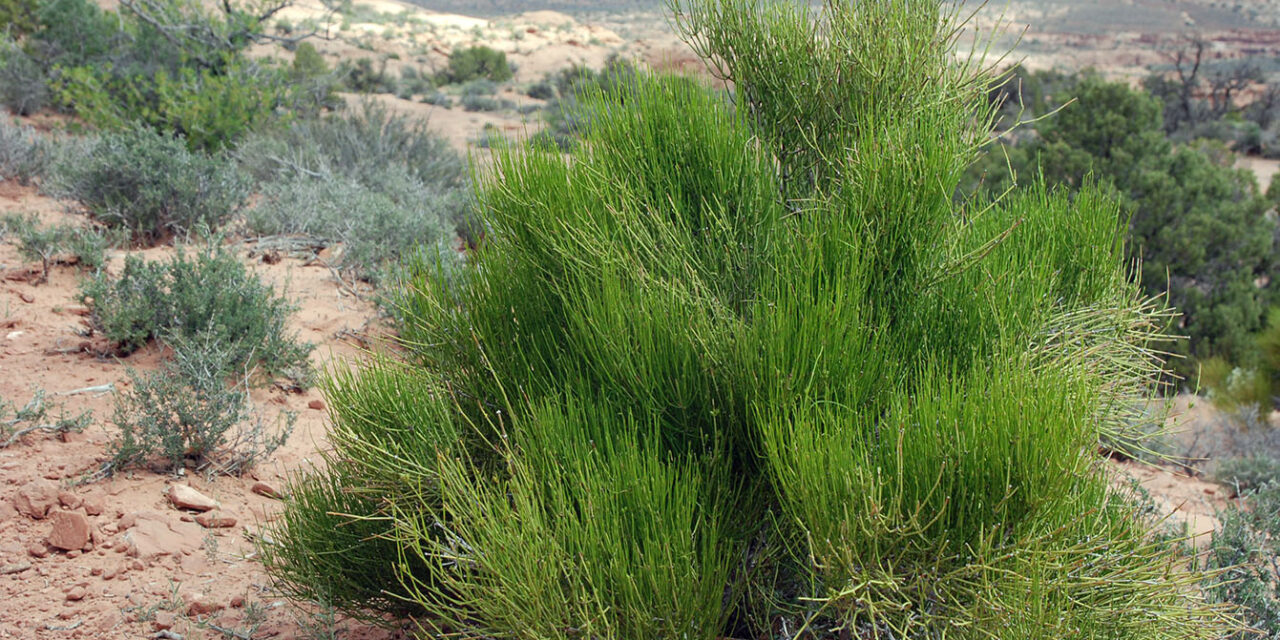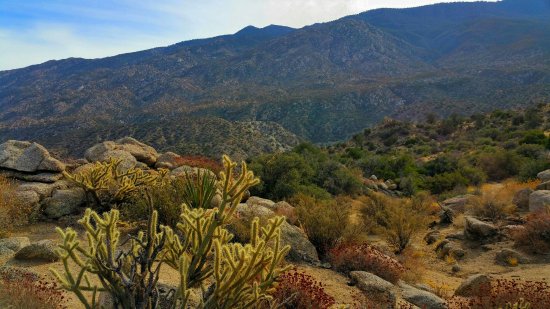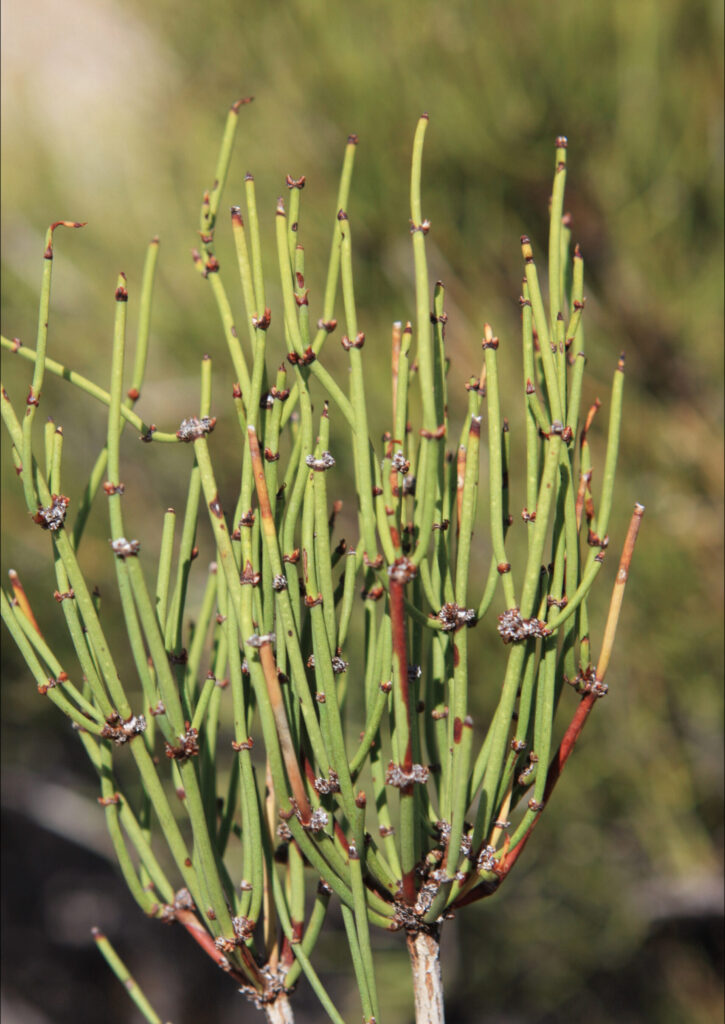Mormon Tea. Brigham Tea. The tea that some of the early Mormons drank, the approved tea I suppose and named after Brigham Young. I can see why they drank it. The tea was made from the Ephedra plant — Ephedraceae Ephedra Viridis. The active chemical in the plant is ephedrine, a stimulant similar to the amphetamine family.
Ephedrine is a sympathomimetic amine and substituted amphetamine. It is similar in molecular structure to phenylpropanolamine, methamphetamine, and epinephrine (adrenaline). Chemically, it is an alkaloid with a phenethylamine skeleton found in various plants in the genus Ephedra (family Ephedraceae). (ref)
Today, the cold medicine called Sudafed is regulated in the United States because it can be used to make methamphetamines. You have to show your ID at the pharmacy and they keep the drug behind the counter. Kind of a pain. But it’s a good drug for congestion.
I’ve been studying herbs since about 1972, way before they became popular. I used to go to this little hole-in-the-wall shop in Van Nuys, CA to buy herbs. It was like going to Dr. Bombay’s store in the old Bewitched series. No bat wings or eye of newt though. I never purchased ephedra there. It was pretty easy to get amphetamine derivatives from the diet doctors during that era. Believe me, I took them from one of the most notorious doctors of Beverly Hills — Dr. Saginor, the private physician and friend to Hugh Hefner. Yea, he invited me to the mansion. Today, he would be in trouble for all his womanizing in the office. But, yes, glad I dodged that bullet, especially since I recently watched the documentary, Secrets of Playboy and heard Dr. Saginor’s daughter relate the history at the mansion with her father.
Back to Brigham Tea. Doing a little research, I found that this tea was also called whorehouse tea — how ironic we’re back to the playboy club. Well, I have to know why it was called whorehouse tea. Good golly miss molly, it could be anything.
Ephedra viridis, a species found in the American southwest, is known as Mormon tea, Brigham’s tea, Squaw tea, Whorehouse tea and Cowboy tea… Native people historically used the tea to treat colds, fever, headaches, and bowel and stomach disorders. Mormons learned the use of this plant from people of southwestern regional tribes. The name ‘Whorehouse tea’ refers to the drinking of the tea in the former well-known brothel Katie’s Place in Elko, Nevada during the gold rush of the 1900s. (Fox News)
Well, digging further, I found a few more references, though as history goes, it is not always a confirmed source. In a book about the medicine of the old west, one chapter addressed the remedies for the sexually transmitted diseases of the time, gonorrhea and syphilis —
An alternative treatment was the use of Mormon tea, which was also called whorehouse tea but more politely desert tea. This practice was supposedly started by a Jack Mormon, who frequented a bordello named Katie’s Place in Elko, Nevada, during the mining rush. Because of its supposed reputation for curing syphilis, Mormon tea became a standard fixture in brothels all over Nevada and California. (Agnew, J. (2010). Medicine in the Old West: A History, 1850-1900. Ukraine: McFarland, Incorporated, Publishers.)
Well, digging down further and I found another source titled, Ephedra or Tutut by Sarah Witt in DESERT ECOSYSTEMS AND PLANTS —
I was attending the annual spring agave roast, a tradition of the native Cahuilla people that’s continued to this day at the Malki Museum on the Morongo reservation in Banning, CA. While talking to a highly revered cultural anthropologist and Malki board member, picking his brain about culinary and medicinal plants, I casually mentioned “Mormon tea.” His smile dissipated and he looked at me with a very grave brow. “Never call the ephedra plant Mormon tea.” I was really caught off guard and asked meekly, “why?” It was the most commonly used common name I had encountered when referring to the abundant stick-like plant that reigns alongside creosote bush and Joshua trees in our desert terrain—field guides use it, as do botanists and long-time desert dwellers, and all of my medicinal plant books also uses that label. “Because,” he matter-of-factly stated, “the Cahuilla used this plant to treat syphilis, gonorrhea, and other venereal disease—all of which were introduced by the Mormon or white settlers. Using that name displays a lack of respect and honors the colonial spirit.”
As a white woman and desert transplant—who additionally works with wild regional plants and draws heavily upon native traditions when researching their culinary aspects—this plant epitomizes my colonial conflict I try to tame. How can I respectfully work with the flora of this region without evoking the vestige of the rapacious European who has stolen and benefited from the oppressed? I get down about it, and sometimes think about just going back to commercially available plants in my cooking practice. But I was talking to a Joshua Tree herbalist the other day, and she too expressed similar insecurities, and simultaneously emphasized the importance of not losing the historical and cultural knowledge that has been practiced for centuries. To continue to work with these plants and remember their heritage is critical, and so is using the Cahuilla nomenclature.
By saying “Tutut,” you are reminded that you were not here first. You are not entitled to anything. That what you know is not born of your own genius, but a legacy that deserves to be acknowledged and honored only with the most honest, humble gratitude. (ref)
Well, that was interesting. I’m familiar with some of the areas of the Cahuilla Agua Caliente band. They were/are located in the Palm Springs area, where we used to go as a family every year.
I started writing about the stimulant amphetamine characteristics of Mormon tea, but as things go, I found more. Interesting tea and history.




